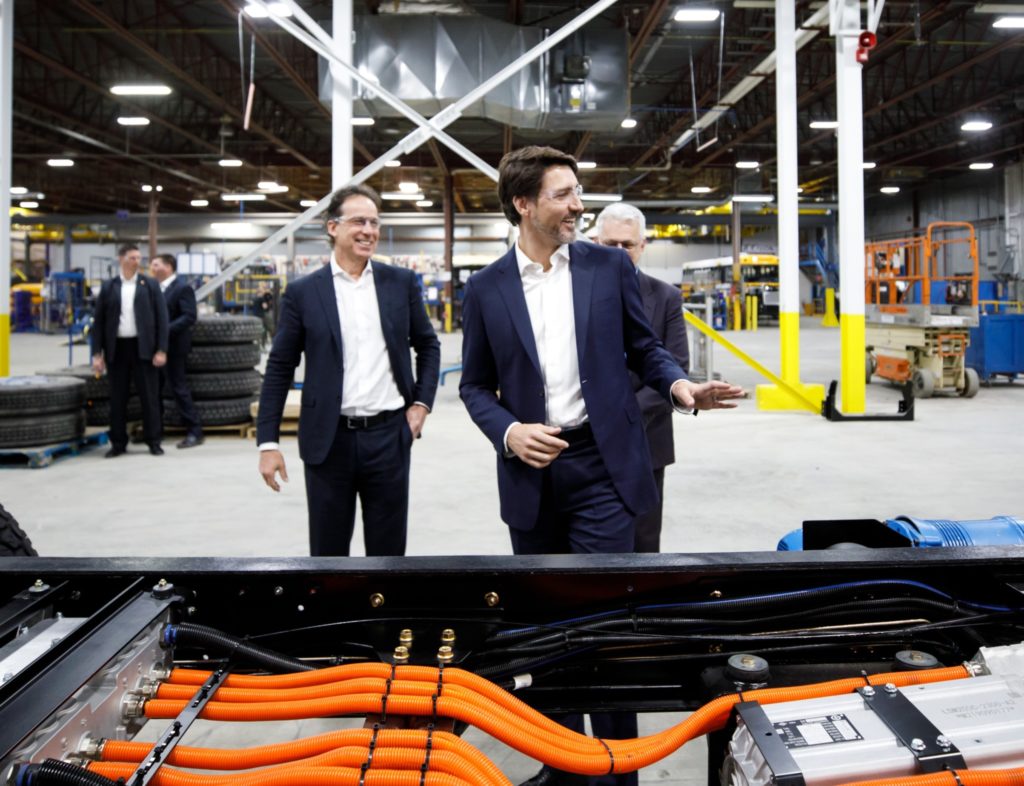Canada commits to zero-emission truck sales targets and incentives
Zero-emission vehicles (ZEVs) will need to account for 35% of Canada’s medium- and heavy-duty truck sales as early as 2030, under a series of sales targets and incentives unveiled in a new federal emissions reduction plan.
Where feasible, all the vehicles sold in certain segments will need to be zero-emission models as early as 2040. Interim sales targets are being explored for the mid-2020s as well.

The targets announced on March 29 become some of the most aggressive in North America. California, in a previous move endorsed by 15 other states and the District of Columbia, wants 30% of new medium- and heavy-duty trucks to be ZEVs by 2030.
Canada’s 2030 Emissions Reduction Plan also includes more than $780 million in related financial incentives.
Details around $547.5 million in purchase incentives for medium- and heavy-duty zero-emission vehicles, along with eligibility dates, are to be unveiled in the coming federal budget. Another $199.6 million will be invested to retrofit large trucks already on the road. And $33.8 million will be available for projects that demonstrate hydrogen-electric trucks, to address barriers such as technical standards that apply to longhaul trucks.
Several provinces such as B.C., Quebec, and those in Atlantic Canada, as well as the Yukon and Northwest Territories, offer incentives to purchase zero-emission vehicles within their jurisdictions. Ontario canceled its rebates in 2018.
“Taking real climate action that is not only ambitious, but also achievable, is key to building a strong economy in the 21st century,” Prime Minister Justin Trudeau said in a related statement. “With the additional measures announced today, we are continuing to deliver on the priorities Canadians asked us to address: clean air, good jobs, a strong economy, and a better future for everyone.”
Trucks and emissions
“Thanks to the actions of millions of Canadians, we have flattened the curve of our pollution trajectory, and this roadmap charts the course to lowering emissions to meet our climate target of 40 to 45% below 2005 levels,” added Environment and Climate Change Minister Steven Guilbeault.
Heavy-duty trucks account for a significant share of Canada’s carbon dioxide emissions despite tightening emissions standards that apply to diesel engines.
Transportation accounts for 25% of Canada’s overall emissions, according to the most recent National Inventory Report. About 35% of those – 65.4 Mt of carbon dioxide – came from heavy-duty trucks in 2019.
“Like all sectors of the economy, the trucking industry must do its part to reduce carbon emissions,” said Canadian Trucking Alliance president Stephen Laskowski. “The challenge our sector faces, particularly the longhaul portion of the industry, are technology barriers preventing the introduction of alternatives to the diesel engine.”
The CTA is supporting commitments to engage stakeholders and establish “feasibility criteria” for the regulatory changes, as well as the incentives for fleets that want to invest in green technologies, he added.
The alliance has already been lobbying for incentives to increase the use of low-carbon technologies and pilot projects like recent research into fuel-cell-electric vehicles conducted by the Alberta Motor Transport Association (AMTA).
Have your say
This is a moderated forum. Comments will no longer be published unless they are accompanied by a first and last name and a verifiable email address. (Today's Trucking will not publish or share the email address.) Profane language and content deemed to be libelous, racist, or threatening in nature will not be published under any circumstances.
No mention in this story of the potential for the use of low-carbon renewable biodiesel fuels as an option. Rather than dictate a particular technology or strategy, why not let the trucking fleets decide which is the best way to decarbonize for them? BEV, FCEV or advanced diesel using low carbon renewable fuels that are available now?
Why is Ontario not offering the rebate program for commercial trucks? Being the major contributing province to emissions in Canada (based on population alone), Ontario should be leading the curve to a sustainable future. I would assume that this technology is expensive and Ontario should reward the trucking industry leaders for helping build this future. Lets go !!
A picture of Trudeau a cant believe it
I found this article very interesting. How will ZEV’s impact our hydro supply? Are there enough resources available to continue to produce ZEV’s foreseeable future, if so what kind of environment impact will that have on the globe.